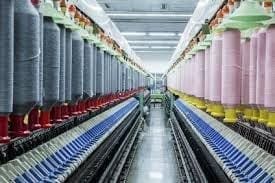Textile machinery is used in the textile manufacturing industries to produce Yarns, Fabrics, and Threads.
Textile machinery has a crucial role in deviating the global Textile and Apparel industry from labor-intensive production to a more industrialized sector. The constant rise in demand of textile machinery is due to growing demand for textiles. Apparel industry possess tremendous growth potential in coming future because of continuous changes in the fashion trends.
Textile machinery is used in the textile manufacturing industries to produce Yarns, Fabrics, and Threads. These textile machines are operated at various stages such as Spinning, weaving, knitting, Texturing as well as in dyeing. The textile industry uses machines to make clothes, other textile products and are used to create specific fabric effects like embossing, bleaching and mercerizing and so on. Mercerizing process is deployed to make cotton stronger and shimmer.
With the advancement of industrialization and modernized economy, major leading textile manufacturing countries are moving towards technology and innovation. Thus, one of the major trends in textile machinery industry is the increasing usage of automation and robotics that help the textile industry in simplifying complex textile processes and improve speed, quality, and cost of textile manufacturing.
The main challenges in adoption of the automated machines are operating costs for a textile manufacturing industries, some of these costs could include research and development costs of automating a process, preventative maintenance costs, and the cost of training employees to operate automated machines.
Another major trend in textile machinery is the Printing Technology such as laser printing Technology, which provides the uniform appearance on the clothes. Digital printing is preferred for complex and layered printing, while creative clothing are manufactured by using 3D printing, enabling the textile industry to upgrade with the latest machinery and equipment’s and refine the textile manufacturing process.
The changing government policies and lack of systematic fiscal support at the state and central government levels are posing major challenges to the textile industry. The tax structure GST (Goods and Service Tax), Tariff Barrier makes the garments expensive for trading across the world, therefore textile industry requires support from both the Central and State governments to become competitive in the Global market.
The textile machinery manufacturers are frequently trying to make new innovations in the field of textile machinery, which offer great opportunities for textile industries to enhance the quality of textile production and to strengthen the position in the world market.

